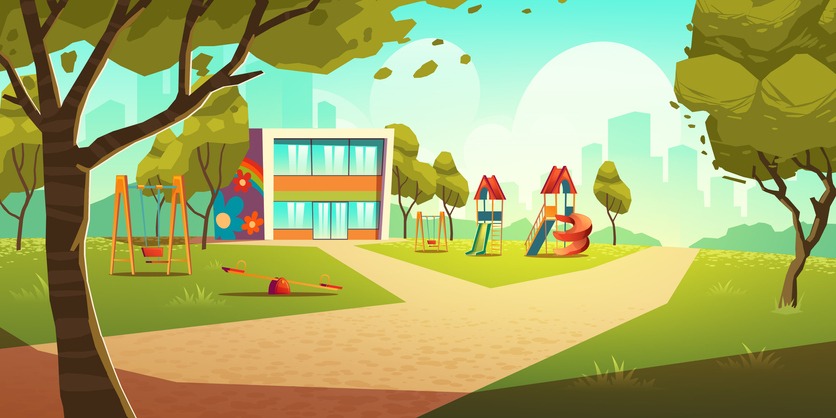
With primary school children spending up to 20% of their time on the playground, it’s crucial for SBLs to find ways to find funding for it – Justin Smith offers his top tips
CREDIT: This is an edited version of an article that originally appeared on Fund Ed
The Play England Charter defines play as the spontaneous engagement of children and young people in their own pursuits, driven by their ideas and interests, free from adult direction.
Creating suitable play spaces is integral to our commitment to nurturing the well-being of young individuals. Yet securing the necessary funding to realise these spaces is far from simple. The 2021 report on education spending in England underscores a nine percent real-term decline in school spending per pupil over the past decade.
In light of such persistent budgetary constraints, the challenge arises: how can schools amass the resources to enhance their playgrounds, especially considering that certain installations can cost upwards of £20,000, and a comprehensive playground overhaul may command even more substantial funds? The solution lies in crafting a comprehensive strategy that explores various avenues of funding.
A Methodical Approach to Financing Your Playground
School playgrounds exhibit a diverse array of sizes and configurations. Beyond positively influencing children, investments in playgrounds can substantially bolster your school’s appeal to both current and prospective parents.
Attune to Children’s Voices
Any supporter, whether a grant provider or a donating parent, seeks concrete evidence of necessity and impact. Amidst a sea of demands, your responses to two pivotal queries can determine your success: Why should I contribute? What transformative effect will my contribution yield?
To construct a compelling reply, begin by involving your students. As the primary users and beneficiaries, their involvement is pivotal in shaping your project. Initiate consultations to determine their preferred play equipment, ideal placement, envisioned usage scenarios, and whether the play area should be open and accessible to all students.
This process carries profound significance. The National Lottery underscores its importance through a dedicated video. Prospective funders aim to ascertain that beneficiaries have been consulted and have played a part in moulding the project’s form.
Capture images of student council members in discourse with potential suppliers. Craft video snippets illustrating students’ involvement in designing their upcoming play area. Leverage opportunities offered by grant providers to showcase photographs and videos. Develop a project name, involving students in this decision-making process. Consider organising a straightforward competition to engage parents and spread your aspirations beyond the school premises.
Recruit your ambassadors
‘No one cares how much you know until they know how much you care.’ This quote from Theodore Roosevelt is very apt when it comes to school fundraising. A genuine and emotive campaign is more likely to connect with your support base and create a positive response. Involving pupils and parents early on helps develop a sense of ownership and responsibility. Bring them on board and make sure they feel part of the collective effort. They can enjoy the success too.
Manage the campaign
There are many ways to approach fundraising for capital projects. Much will depend on the amount you’re looking to raise, your school circumstances and your operating environment.
Consider all avenues and select multiple routes to funding – an overreliance on one source can be hard work and unrewarding. Be realistic about your aims and break the project into two or three phases if you need to.
Crowdfunding is ever more popular, with platforms that are free to set up and simple to manage. Most providers charge in the region of three to five percent of the funds raised. Keep your message punchy and to the point. Sell the value of the donation and the impact each contribution can have. Upload images (playground suppliers can provide graphics to help) and link the page to your website and social media.
Grant funders will want to see that you’ve made every effort to raise funds yourself, so tell them what you’ve been doing – the work of the PTA, school contributions, sponsorship and so on. A successful fundraiser is a great storyteller – paint the picture and take the funder along on your journey.
Articulate clearly your case for support – why is your playground needed and the evidence that proves the need. Make use of your subscription to the FundEd grants database to identify eligible funding options for your project. The filters and search facilities make it very easy to use.
Local business owners may be parents of children in the school and are worth approaching with an offer. People love to support tactile, physical projects with a tangible outcome. Your bright, shiny new play area is a highly visible space and will bring a lot of attention. Attract sponsors with the promise of their name and logo on a donation board and an invitation to the press launch.
PE and Sport Premium funding is an option but be aware that the DfE does not permit its use on capital-based projects. The Association for Physical Education (afpe.org.uk) has guidance on this, including details on the five key indicators that schools should see improvements in.
If you’re creative and can demonstrate sustainability and impact, then Sport Premium could be an option. Speak to your local Active Partnerships too, as they’ll have suggestions on appropriate routes to funding (sportengland.org).
Shout from the ramparts
Even good campaigns fail to get off the ground if they’re not marketed properly. You don’t need a slick PR campaign but do plan how you will launch the project and then follow up with reminders and reposts.
Your school website is the primary portal for information, so make sure your campaign is visible and can be accessed with just one or two clicks. A banner across the top of the home page, a scrolling tickertape or a new ‘Fundraising’ tab will help convert interest into action. Provide links to your crowdfunding page from Twitter, Facebook and so on. You can add a hashtag to your new project name too. Remove the barriers and make it easy for people to help you.



Be the first to comment